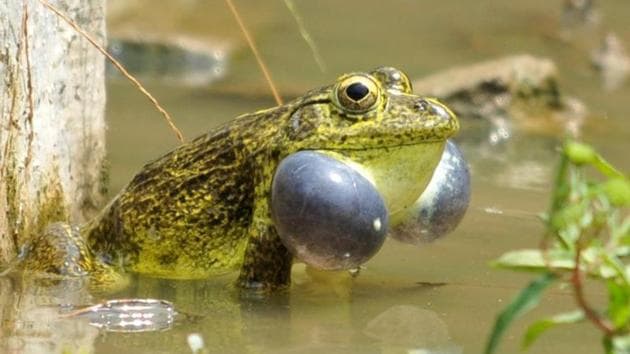80% of India’s frogs are facing extinction, says study
The Indian Purple Frog, an endemic and endangered species found in bio-diversity hotspots of rich but eco-sensitive Western Ghats, is also facing extinction.
Nearly 80% of the frogs in the country are on the verge of extinction and some of the species have already vanished mainly due to their shrinking habitat caused by human incursions, a noted amphibian scientist has said.

Dr SD Biju said on Tuesday that the shrinking rate of frogs worldwide is 74% but in India, it is more than 80%, while presenting a paper at the Kerala Science Congress in Thalasserry in north Kerala.
At least 412 amphibian species are found in the country and some of them are on the verge of extinction, Biju, who teaches at the University of Delhi, said.
Biju said amphibians frogs are one of the most endangered and some of the common species like the fungoid frog (Rana Malabarica) are rarely seen in some of its best habitats in the country.
The Indian Purple Frog, an endemic and endangered species found in bio-diversity hotspots of rich but eco-sensitive Western Ghats, is also facing extinction.
“Amphibians are an important part of our ecosystem. They are environmental indicators or environmental barometers because of their sensitivity towards small changes in the environment. They help us to predict the quality of our water systems and the surrounding environment,” he said adding that they consume millions of pests helping farmers.
Amphibians are also an important link in the food chain and are known as the conveyor belt of the ecosystem.
“Every year the country is facing thousands of mosquito bite-related deaths. Many are talking about introducing some fish that eat mosquito larva but we conveniently forgot about the best pest killer, frogs,” he said.
Biju said in the country most biodiversity research programmes are reduced to mere surveys and head counts.
“We don’t have a proper record of the number of creatures around us. Take the case of the Western Ghats, we don’t have a complete inventory of the number of animal and plant species,” he added.
“Achieving this is a big challenge since the Indian concept of biodiversity is mostly centred around a handful of large and charismatic animals such tigers and elephants.”




